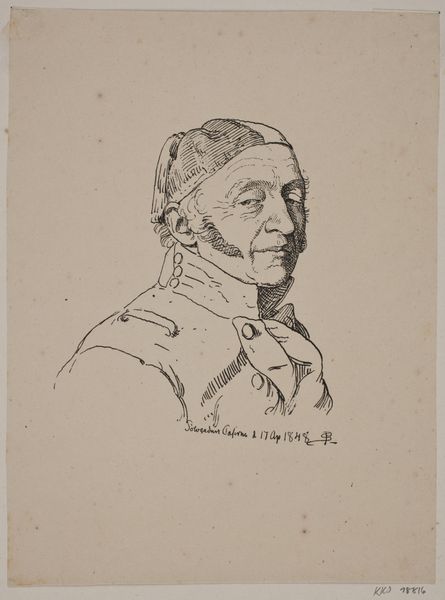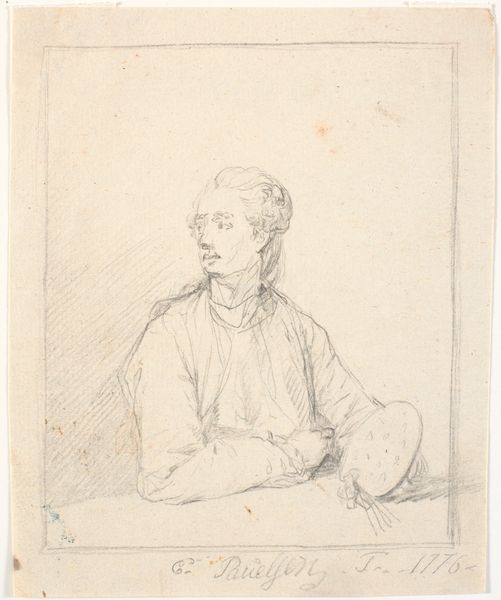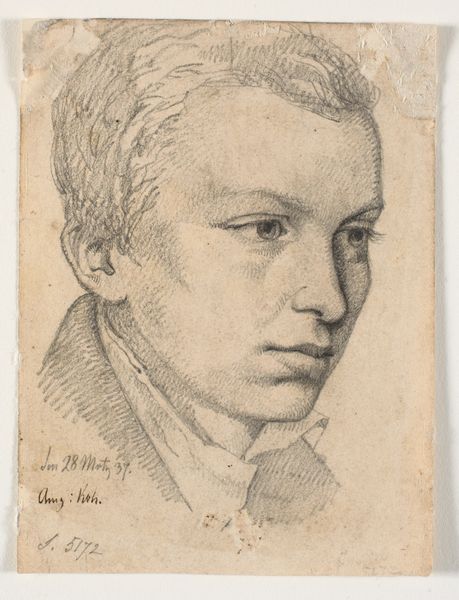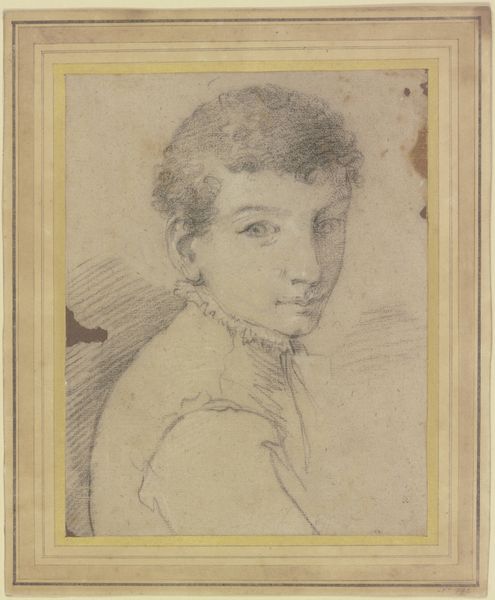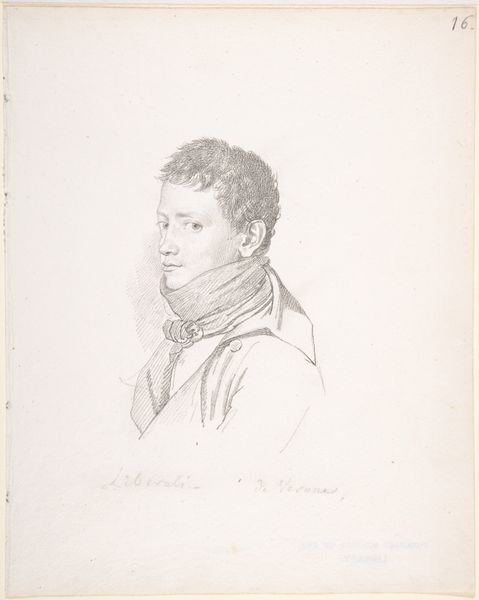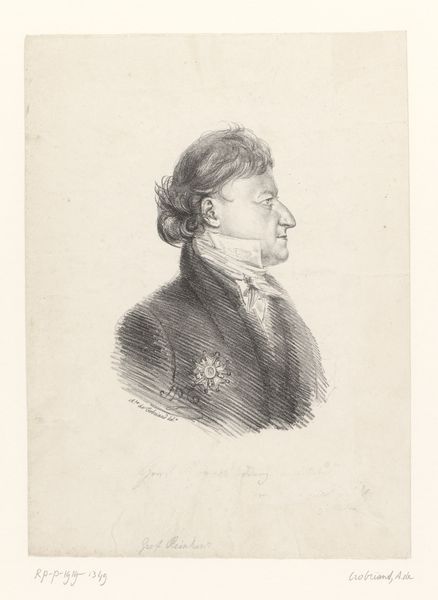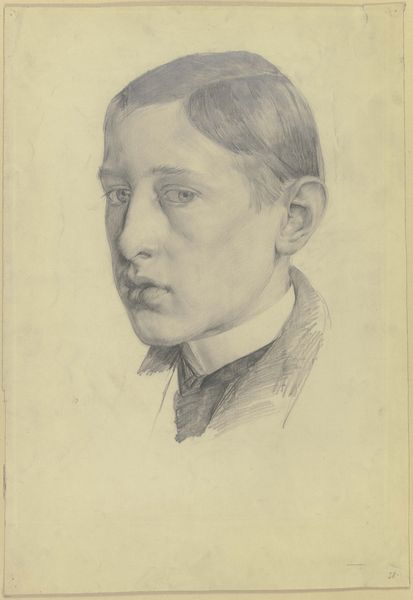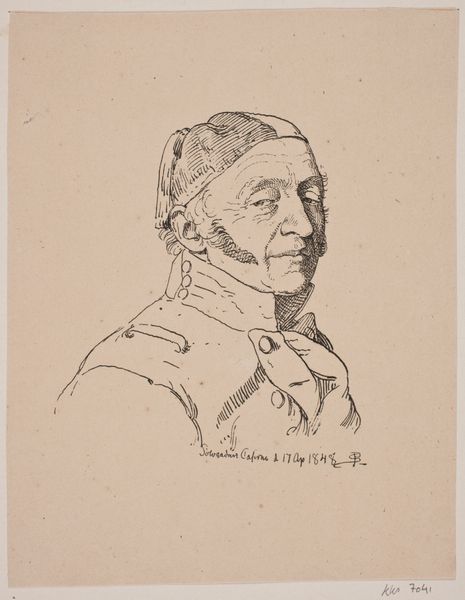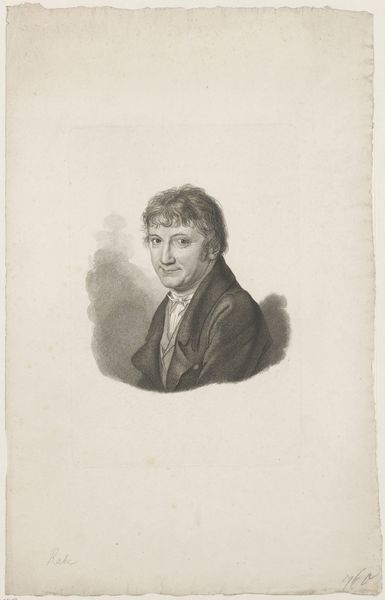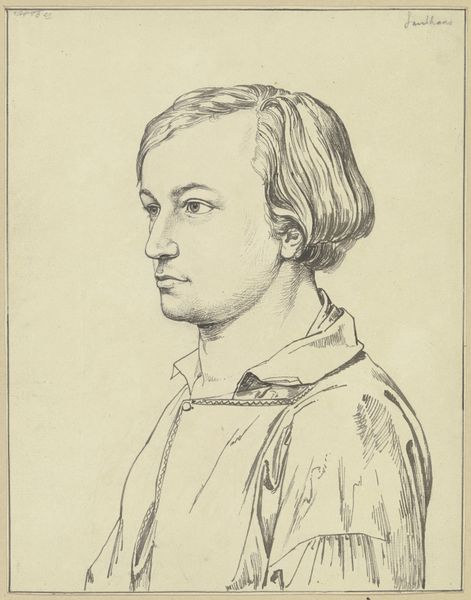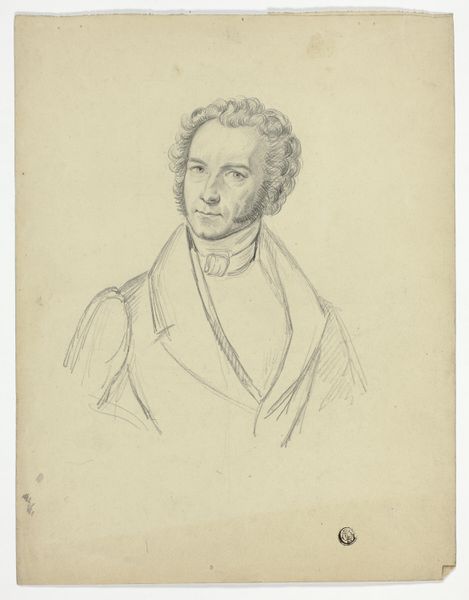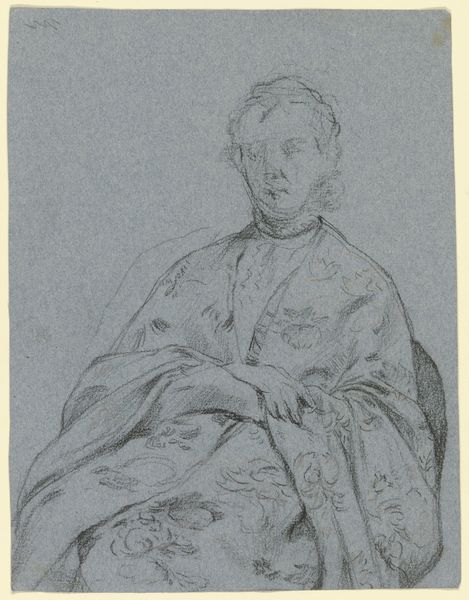
Portrait of a Young Man (recto); Sketch of a Venus (verso) 1820 - 1823
0:00
0:00
drawing, pencil
#
portrait
#
drawing
#
romanticism
#
pencil
Dimensions: Sheet: 17 1/8 × 13 3/16 in. (43.5 × 33.5 cm)
Copyright: Public Domain
Curator: Here we have Richard Parkes Bonington's "Portrait of a Young Man," dating back to 1820-1823. What's your first take? Editor: Well, there's an undeniable softness, almost a gentleness, in the way Bonington captures this young man. It's simple in composition, just a portrait. There’s a vulnerability to it. Curator: Absolutely, it resonates with a certain kind of melancholy. Interestingly, this pencil drawing exists on a sheet of paper that also contains a sketch of Venus on the other side. One wonders what Bonington was pondering. The recto and verso as dialogues in beauty. Editor: You know, when you talk about the pencil medium itself, you begin to appreciate its availability and cheapness; perfect to quickly capture and explore ideas on either side. Were studies like this how an artist generated future commissions? I can picture him using charcoal for more demanding and bigger pieces of work. Curator: A question of social contexts. I agree—perhaps for rapid prototyping of compositions and testing out ephemeral expressions that he couldn't otherwise achieve through other medium and techniques, pencil was ideal for more private, informal and iterative experimentation. Editor: It makes you wonder who this young man was, and how often he sat for Bonington. Curator: Precisely! The lack of pretension is compelling. Bonington wasn't aiming for grand historical narrative; this seems an honest attempt to capture a fleeting moment, an inner state of being in the young man. It certainly adds a profound layer of emotional complexity. Editor: It's so raw and unfinished! That makes it appealing for the modern audience as it resonates with today’s world that loves “being real” even in art and commerce! I also like the simple background which enhances the young man as the focal point, without any surrounding that might be found distracting. Curator: Right! So much expressive intent is located precisely there where nothing much happens; the real, hard work becomes that much more conspicuous to our observing gaze! Editor: That said, perhaps this reveals Bonington's way of seeing art—the materials were essential to his process, each one impacting the other on the making. Curator: What's wonderful about art, I feel, is precisely its uncanny ability to hold an emotion and continue relaying that emotion to generations centuries down the line, making that encounter and feeling alive again as if no time had ever passed.
Comments
No comments
Be the first to comment and join the conversation on the ultimate creative platform.

